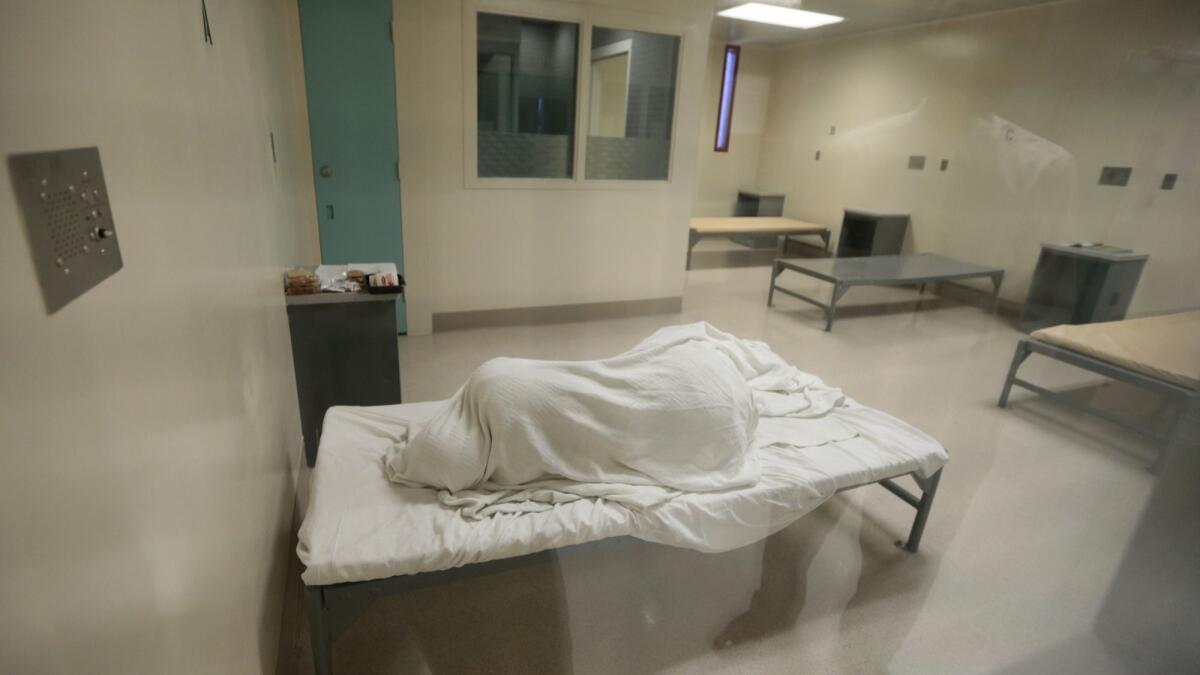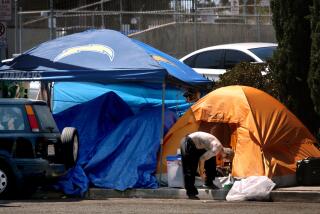L.A. County agrees to new policies to end the jail-to-skid row cycle for mentally ill people

Los Angeles County agreed Thursday to new jail-release planning policies designed to interrupt the incarceration-to-skid row pipeline for inmates with mental illness and dementia.
The new procedures are aimed at stabilizing an estimated 2,500 to 3,000 mentally ill inmates who leave jail each month and at helping them find housing, benefits and employment and thus avoid reoffending.
“We know if you leave the jail with a place to stay and your next follow-up appointment you’re less likely to reoffend,” said Timothy G. Belavich, director of mental health for the jail. “We really do believe this will reduce our recidivism, especially among the mentally ill.”
Although the county had been offering some release planning, mentally ill inmates continued to be put out in the streets in the middle of the night without medication or a clear understanding of where to go for treatment.
The Los Angeles County jail system is considered one of the three largest psychiatric facilities in the country, advocates said.
The other two are Rikers Island in New York City and Cook County’s jails in Illinois. A third of L.A. County’s jail population of 16,704 is classified with mental health issues.
Public Counsel, a nonprofit legal group, and the Munger Tolles & Olson law firm intervened on the inmates’ behalf in a landmark 2015 settlement between the Sheriff’s Department and federal authorities to end deputy abuse of inmates and to improve chronically poor treatment of mentally ill inmates. The new procedures were filed in U.S. District Judge Dean Pregerson’s court Thursday as a settlement amendment.
Under the amendment, the sheriff will begin planning to link mentally ill inmates to community-based treatment and services as soon as they are jailed. Two-week supplies of medication will be provided to those who need it when they are released, and inmates will leave with their first mental health appointment scheduled and a transportation plan to get them there, Belavich said.
The county will also expand staff in the jail to sign inmates up for public benefits, to reunite them with family or to obtain their California IDs, and funding will be available for outside community agencies, including substance abuse treatment centers, to accept jail clients, Belavich said.
“We’re going to make every leg of the stool strong so we have a successful launching of these people back into the community,” Belavich said.
Peggy Edwards, former executive director of the Los Angeles Regional Reentry Partnership, said many mentally ill inmates want treatment, but destabilize when they leave and go off their medication or don’t know how to find it. Their crimes often relate to their mental impairment: probation violations or self-medication with illegal drugs.
“Sure, some people refuse treatment no matter what; they are seriously mentally ill and not capable of participating,” she said, “but I don’t think that’s the vast majority. That’s probably one of the myths, like the myth that a lot of people want to live in the streets.
“It still surprises me the county has dragged its feet so long in getting its policies implemented,” Edwards said.
“This is an important step for incarcerated people with mental health issues, to try to provide services and avoid them being rearrested and using the jail as a mental institution,” said Public Counsel lawyer Alisa L. Hartz.
Twitter: @geholland
More to Read
Sign up for Essential California
The most important California stories and recommendations in your inbox every morning.
You may occasionally receive promotional content from the Los Angeles Times.











